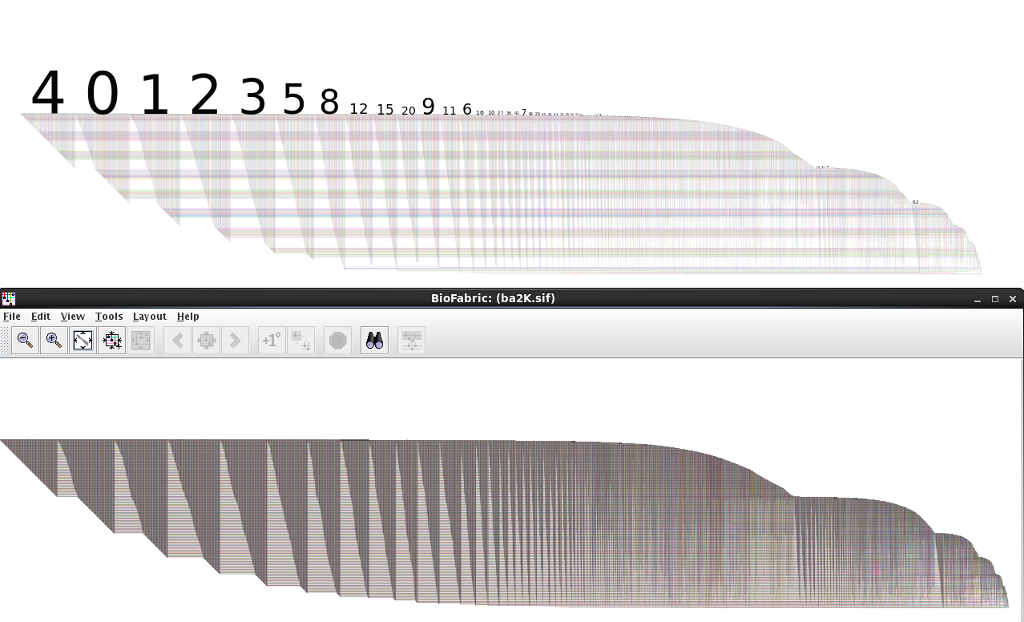The Super-Quick BioFabric demo has been around now for 16 months, and I've found it to be a great way to introduce the nodes-as-lines idea behind BioFabric. It uses Mike Bostock's D3.js JavaScript library to do the rendering of the network, and D3 makes it easy to animate the transitions between the different steps of combing the hairball.
But the demo was hard-wired to just do the Les Miserables network, and up until now I haven't provided a way to use BioFabric directly in the browser, though the XDATA@Kitware project has had a BioFabric example up for a long time. But a recent inquiry about this on the BioFabric-users Google Group motivated me to rip out all the rendering-only code and use it to create a simple bare-bones JavaScript version of BioFabric. The code is now available on GitHub. Here's what it looks like.
But when I say bare-bones, that's what it is. Mostly, it has the problem of only correctly handling a graph with a single connected component. Plus, the rendering is currently problematic for large graphs. For example, this image compares the D3 version (top) with the
Java version (bottom) of the Barabasi-Albert Power Law Random Network example (2K nodes, 11979 links) provided on the BioFabric SIF files page:
 |
| Click on picture to enlarge |
Some of the problems will be easy to fix, once I get around to it, others will be more difficult. As it is, the above network is really slow to render (it takes several seconds), and I will have to go in and see how to make it more efficient. If anybody wants to improve it by contributing code on GitHub, go for it!
So if you've been wanting to play around with using BioFabric in the browser, here's your chance! The miserablesSimple.json file on GitHub is the format you need to use (note the link source and target fields use indices of the node list). The ba2K.json file that is also on GitHub was used to generate the network shown above.
No comments:
Post a Comment